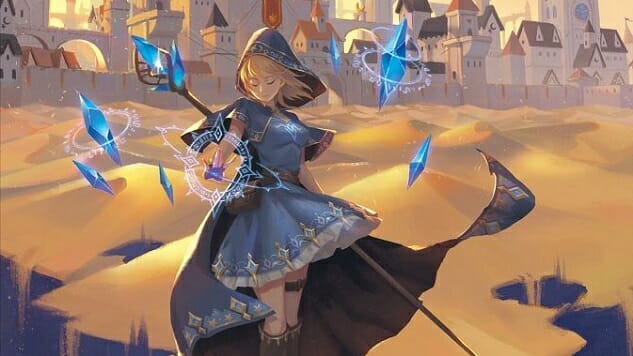Realm of Sand Is a Gorgeous New Take on the Polyomino Board Game Genre
All images courtesy of Deep Water Games
When I hear a new game described as one great game meets some other great game, I usually roll my eyes, or at least do the mental equivalent. Everyone wants to describe games they like as some combination of two great games—just like you hear with movies or TV shows or books. “This new game The Hobgoblins of Hangover Square is just like 7 Wonders meets Gloomhaven!” Sure, buddy. I’ll just be over here playing Wingspan.
So forgive me for what I am about to do: Realm of Sand, a Japanese game brought to the U.S. by Deep Water Games, is almost entirely a mashup of Splendor and Patchwork.
It really is, though. Take the polyomino aspects of Patchwork and cross that with the setup and goals of Splendor, and you get at least 80% of the way to Realm of Sand. And it works, somewhat surprisingly, once you get past the fiddly bits. Those two games shouldn’t taste great together, but they kind of do.
In Realm of Sand, each player has the familiar board with gridlines on it, with a central area in light shading surrounded by squares with dark shading. Each player starts with three of the game’s polyomino shapes, and on a turn may place one of those shapes anywhere on the light spaces on their board. The shapes show up to three colors, and after placing one on their board, the player then replaces each square of the shape with a single-square piece of the same coloring from the supply. You can remove a square from your board on any subsequent turn if you wish to replace it, unlike any other polyomino game I’ve tried; it’s a little wasteful, since you only get to cover up to four spaces on each turn, but it’s often the best available choice.
There are three decks of cards that show patterns you’ll try to match with the squares you place on your board; they’re laid out in three rows, just as in Splendor, and become more difficult from deck one to three. If you match a card, you take it, earning the game-end points shown in the upper left and the immediate rewards shown on the bottom. Those rewards usually include buttons (“spirit stones”) in five different colors, the three from the polyomino pieces as well as two new colors that are required to complete the patterns shown in deck three. Some cards give you a +1 level reward, which allows you to cover one dark square at a time on your board, thus giving you quite a bit more flexibility in placing shapes. When you match a pattern, you remove any of those one-square tiles you placed earlier and return them to the supply, so your board isn’t filling up as it does in Patchwork or similar games (Bärenpark).
-

-

-

-

-

-

-

-

-

-

-

-

-

-

-

-

-

-

-

-

-

-

-

-

-

-

-

-

-

-

-

-

-

-

-

-

-

-

-

-









































